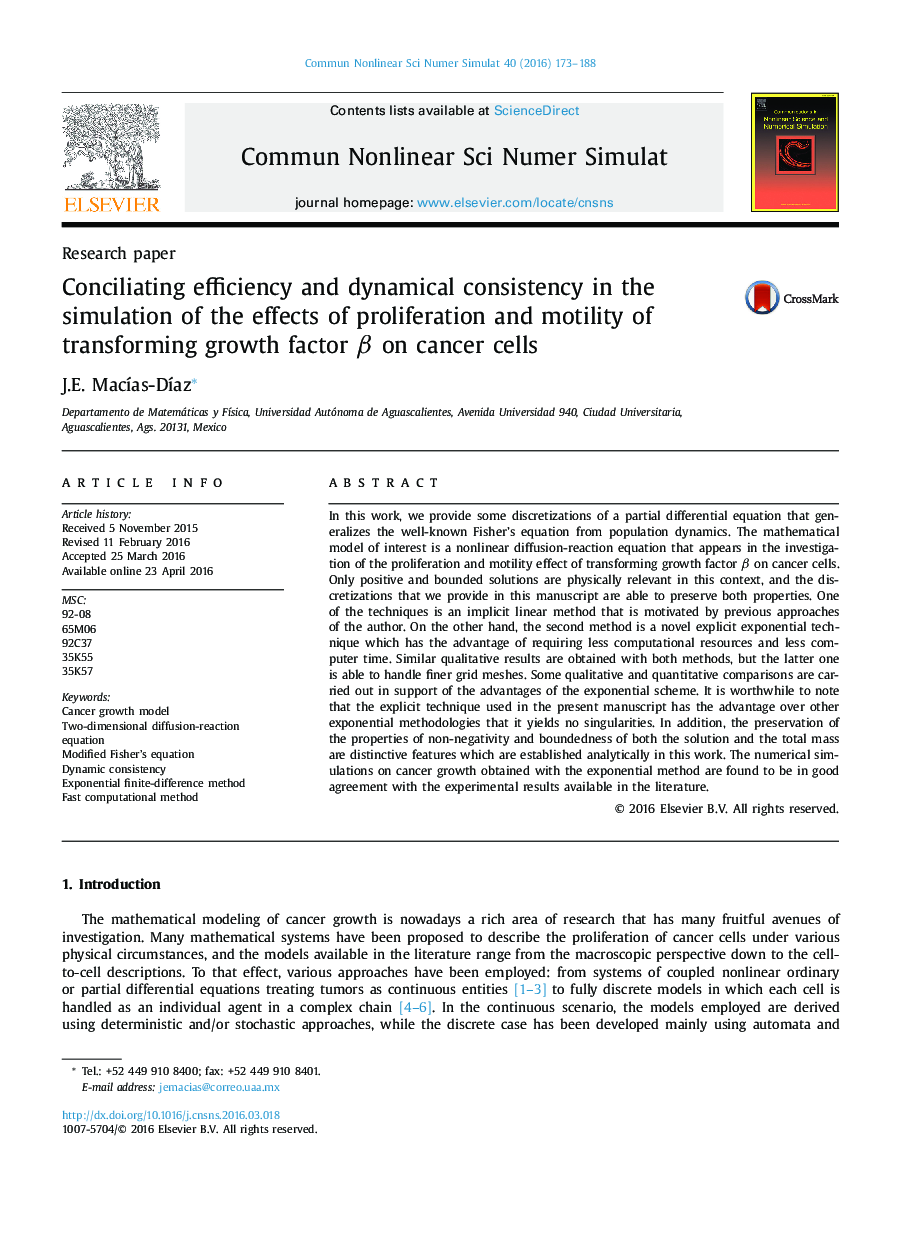| Article ID | Journal | Published Year | Pages | File Type |
|---|---|---|---|---|
| 758080 | Communications in Nonlinear Science and Numerical Simulation | 2016 | 16 Pages |
•A fast exponential technique for the simulation of cancer growth is introduced.•The preservation of the non-negativity and the boundedness of both the approximations and the total mass are demonstrated analytically.•Simulations show that the method is much faster than comparable non-negativity- and boundedness-preserving schemes.•Illustrative experiments in the study of the effects of TGF-β on cancer cells are provided.
In this work, we provide some discretizations of a partial differential equation that generalizes the well-known Fisher’s equation from population dynamics. The mathematical model of interest is a nonlinear diffusion-reaction equation that appears in the investigation of the proliferation and motility effect of transforming growth factor β on cancer cells. Only positive and bounded solutions are physically relevant in this context, and the discretizations that we provide in this manuscript are able to preserve both properties. One of the techniques is an implicit linear method that is motivated by previous approaches of the author. On the other hand, the second method is a novel explicit exponential technique which has the advantage of requiring less computational resources and less computer time. Similar qualitative results are obtained with both methods, but the latter one is able to handle finer grid meshes. Some qualitative and quantitative comparisons are carried out in support of the advantages of the exponential scheme. It is worthwhile to note that the explicit technique used in the present manuscript has the advantage over other exponential methodologies that it yields no singularities. In addition, the preservation of the properties of non-negativity and boundedness of both the solution and the total mass are distinctive features which are established analytically in this work. The numerical simulations on cancer growth obtained with the exponential method are found to be in good agreement with the experimental results available in the literature.
